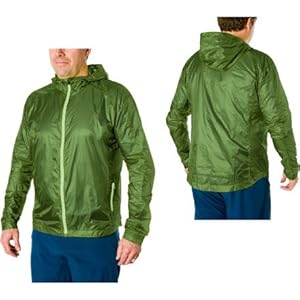
9-7-13 Update: Backcountry no longer sells their Stoic brand. This product is discontinued. I think I would replace it with a Montbell Tachyon.
11-17-12 Update: After several trips with my Wraith windshirt, I love it. I bring it as my rain jacket when the forcast doesn't call for much rain. Others have said it will keep you dry for an hour in rain. I believe it. I bring an umbrella that would help out in a driving rain. My only complaint is the narrow sleeves that would make it hard to fit over my Nano Puff. I still bring my Frogg Togg jacket if I need protection over my Nano Puff or expect an all day rain.
Just got in my new Stoic Wraith Windshirt from backcountry.com Looks great. They are eliminating a 2011 color for $27 at about 2.5 oz. Actual weight is 73g or 2.55oz for the XL
www.backpacker.com/gear-zone-gear-review-stoic-wraith-rain-jacket/gear/15792
3-19 Update: After a week on the AT with the Stoic windshirt, I have to say I love it. Light, packs into the zipper pocket. Only improvement is to waterproof the seams to use as a rain jacket as well. (I added a post on seam sealing sil-nylon.) The sleeves are a little long, but no big deal
Specs: www.backcountry.com/stoic-wraith-shell-mens
The weather-shunning Stoic Wraith Jacket is so small, lightweight, and easy to smuggle, your trail-running partners will think you conjured it out of thin air. Weighing in at a mere 2.5-ounces and small enough to fit in a pocket, the Wraith Jacket puts an end to soggy days on the trail.
- DWR finish repels light moisture
- 3-D Ergonomic fit moves with you, not against you
- Small and light enough to fit in a pocket






















